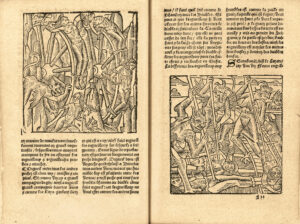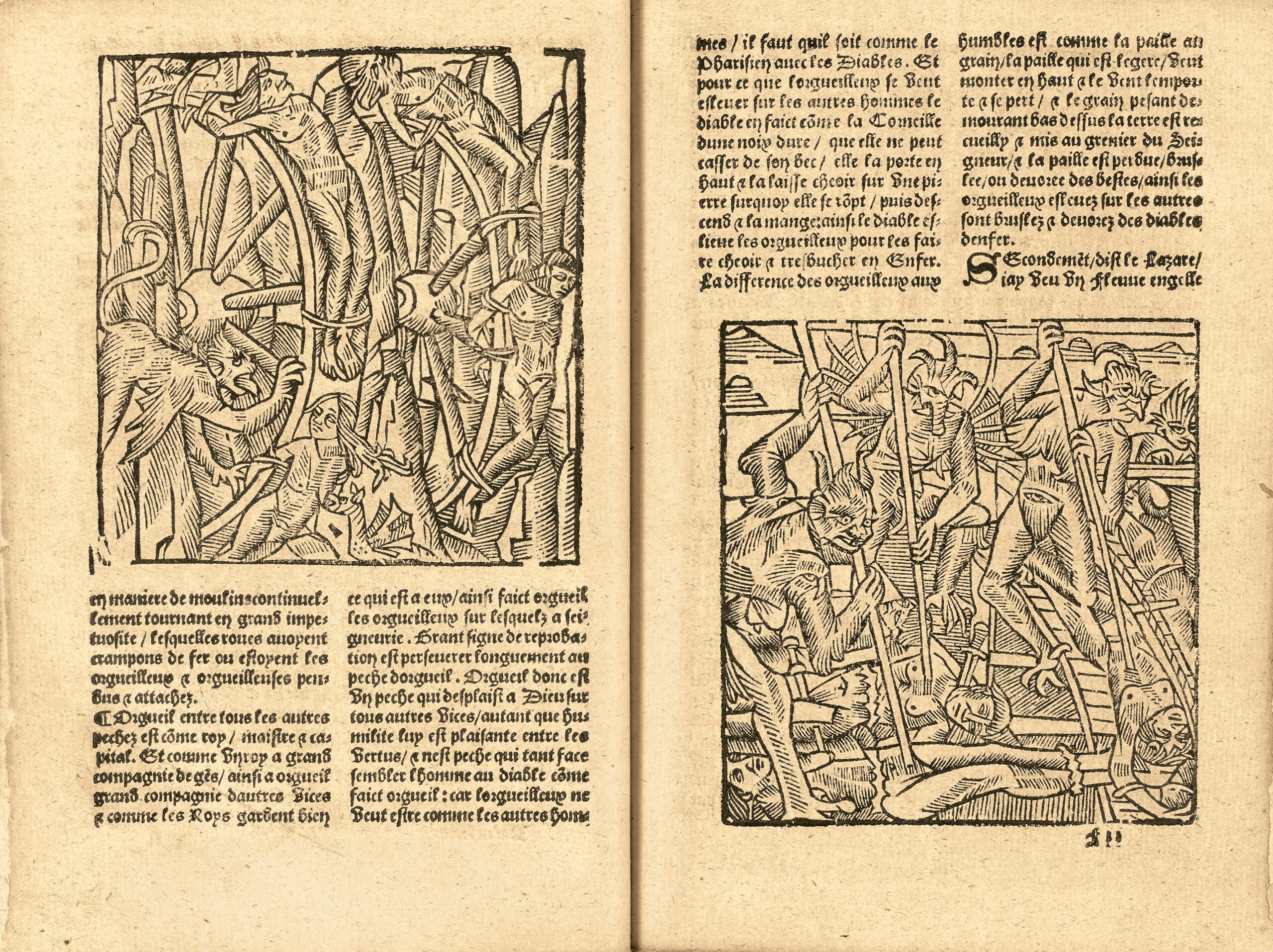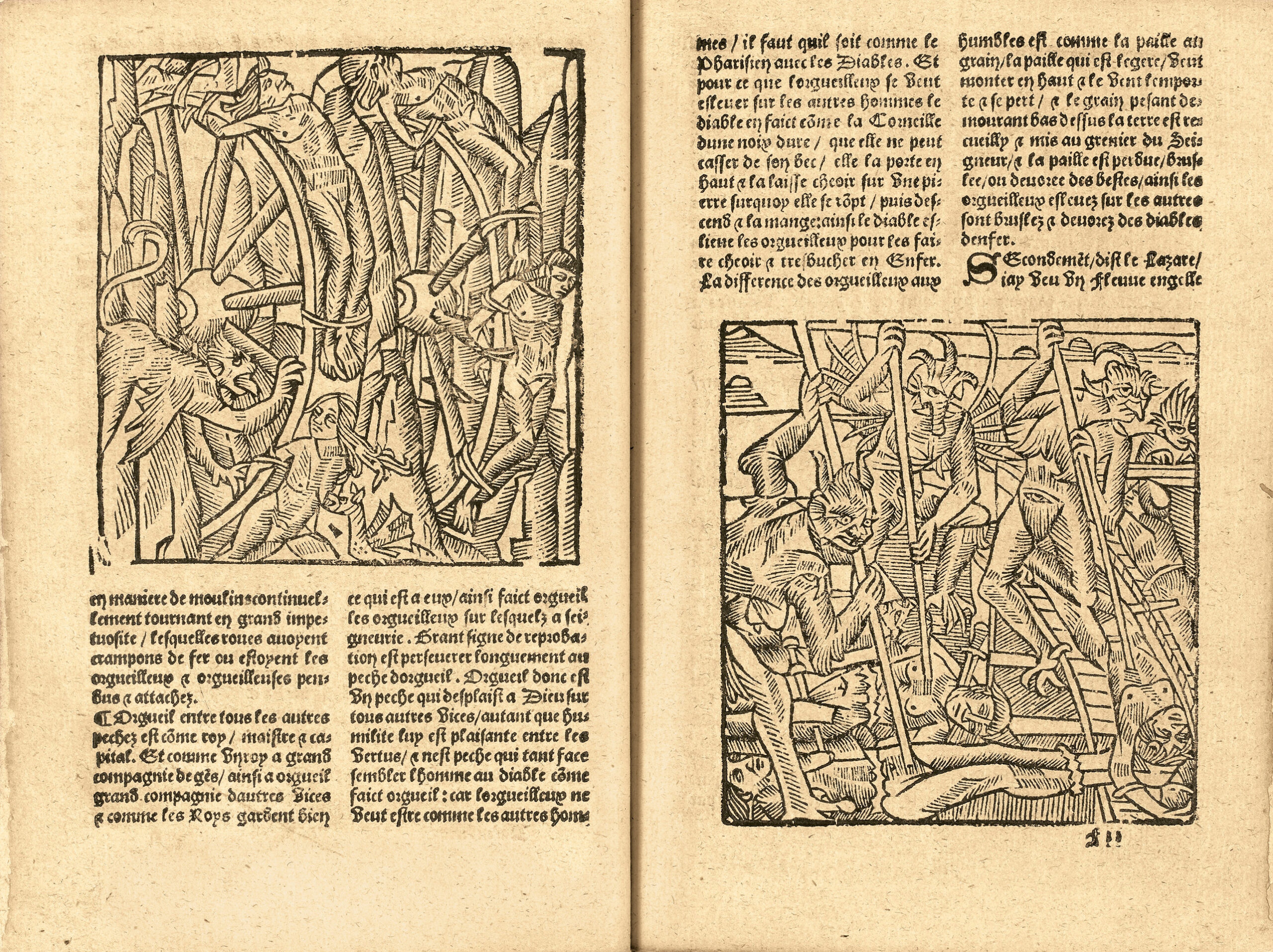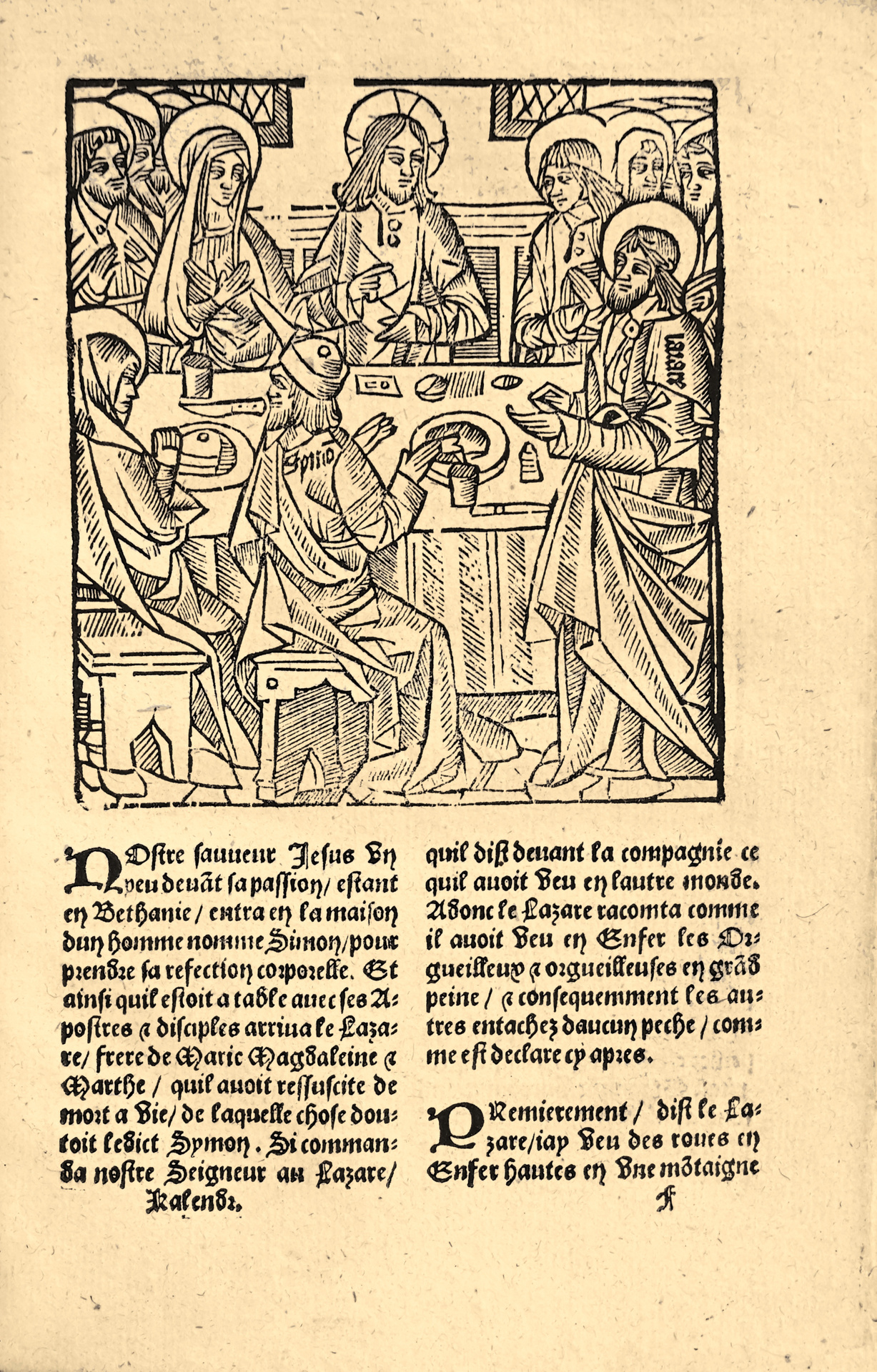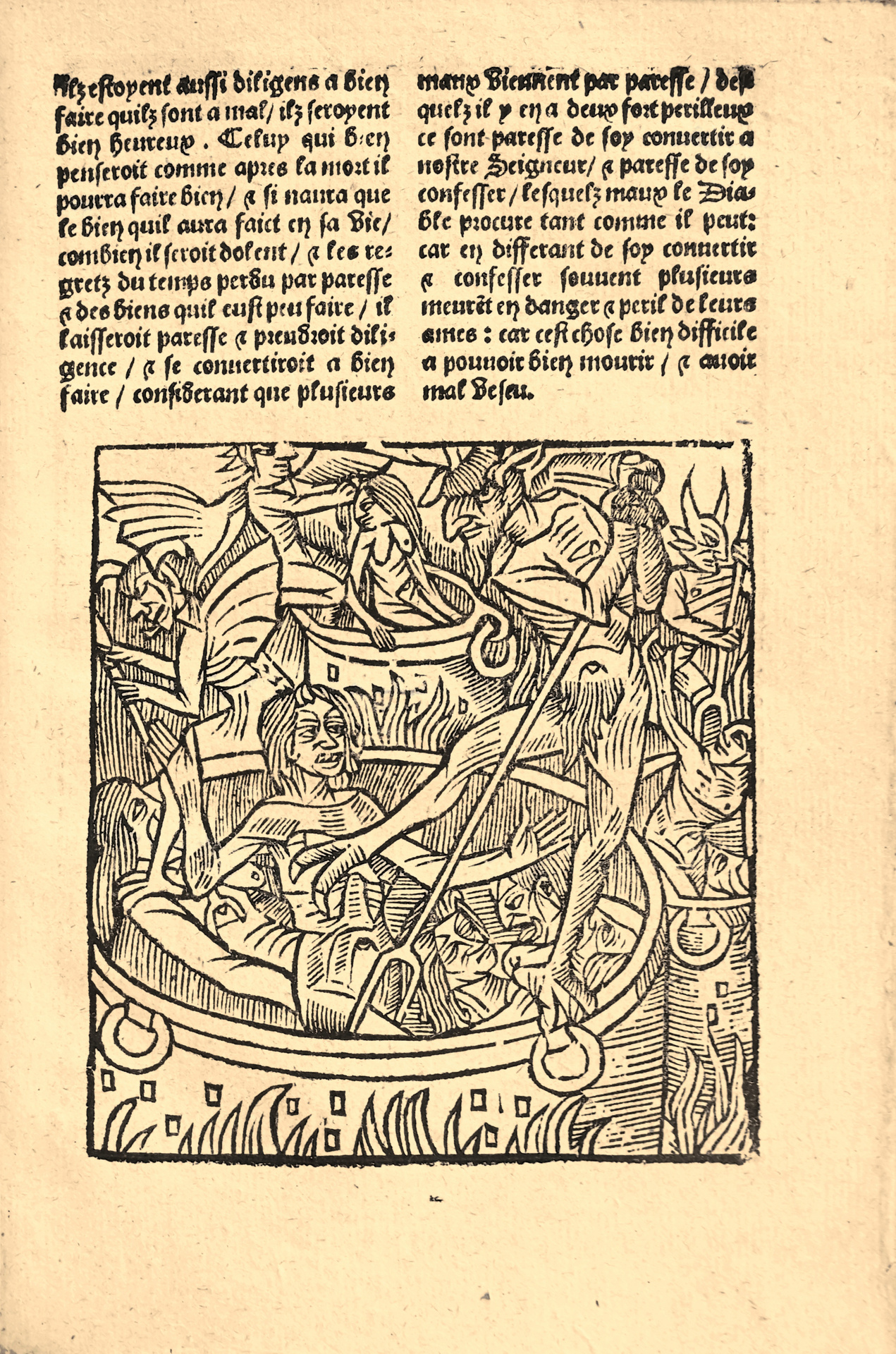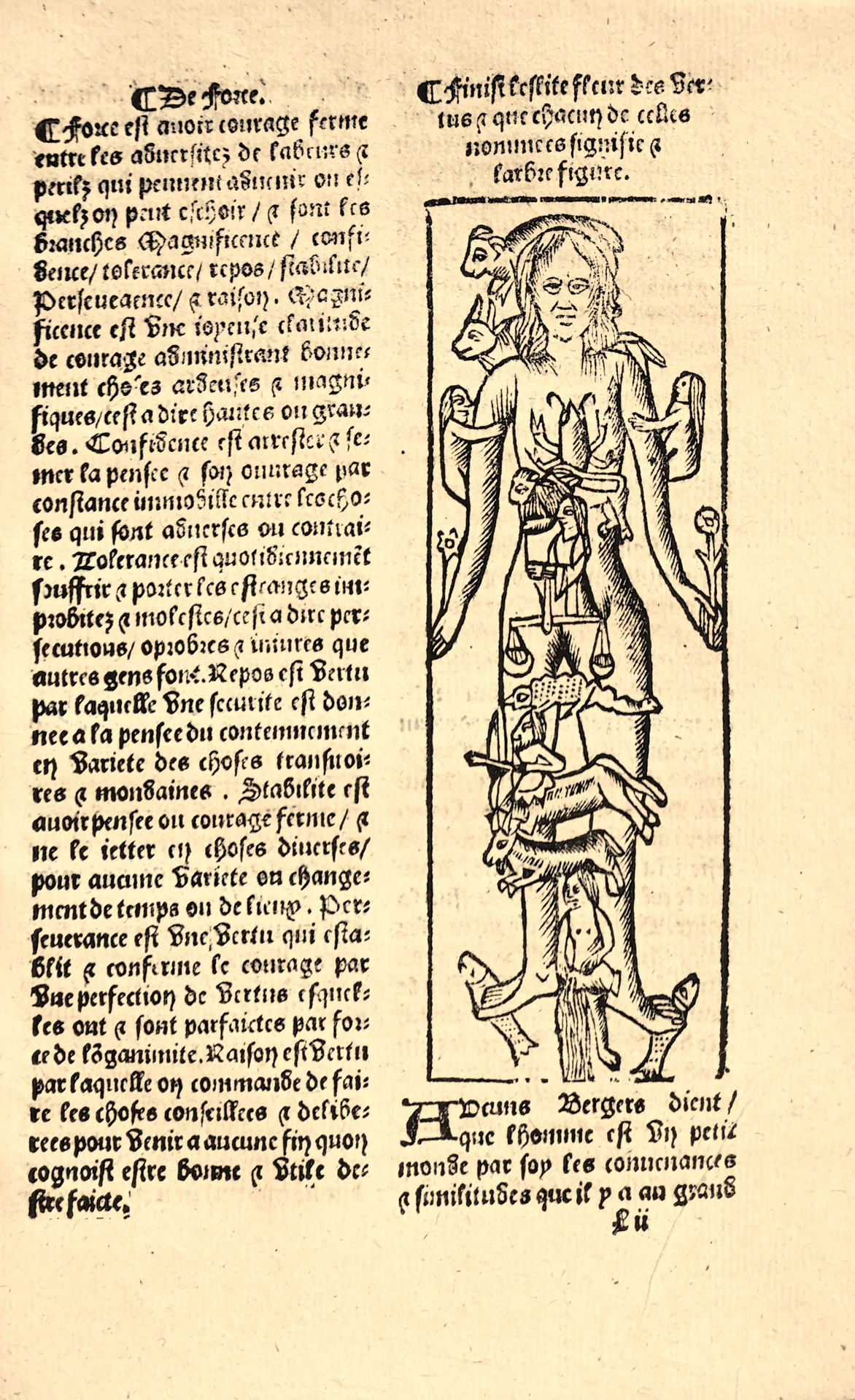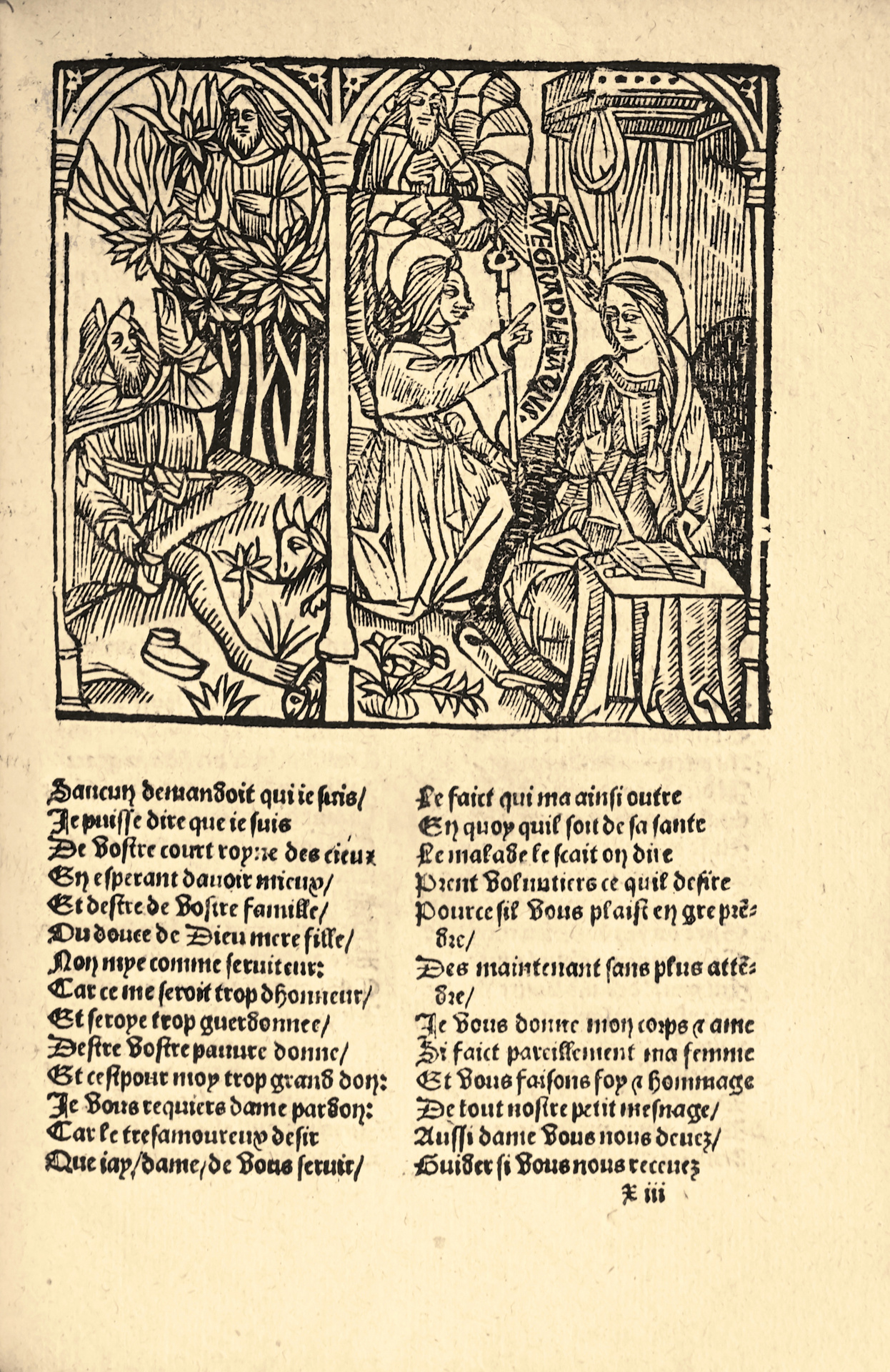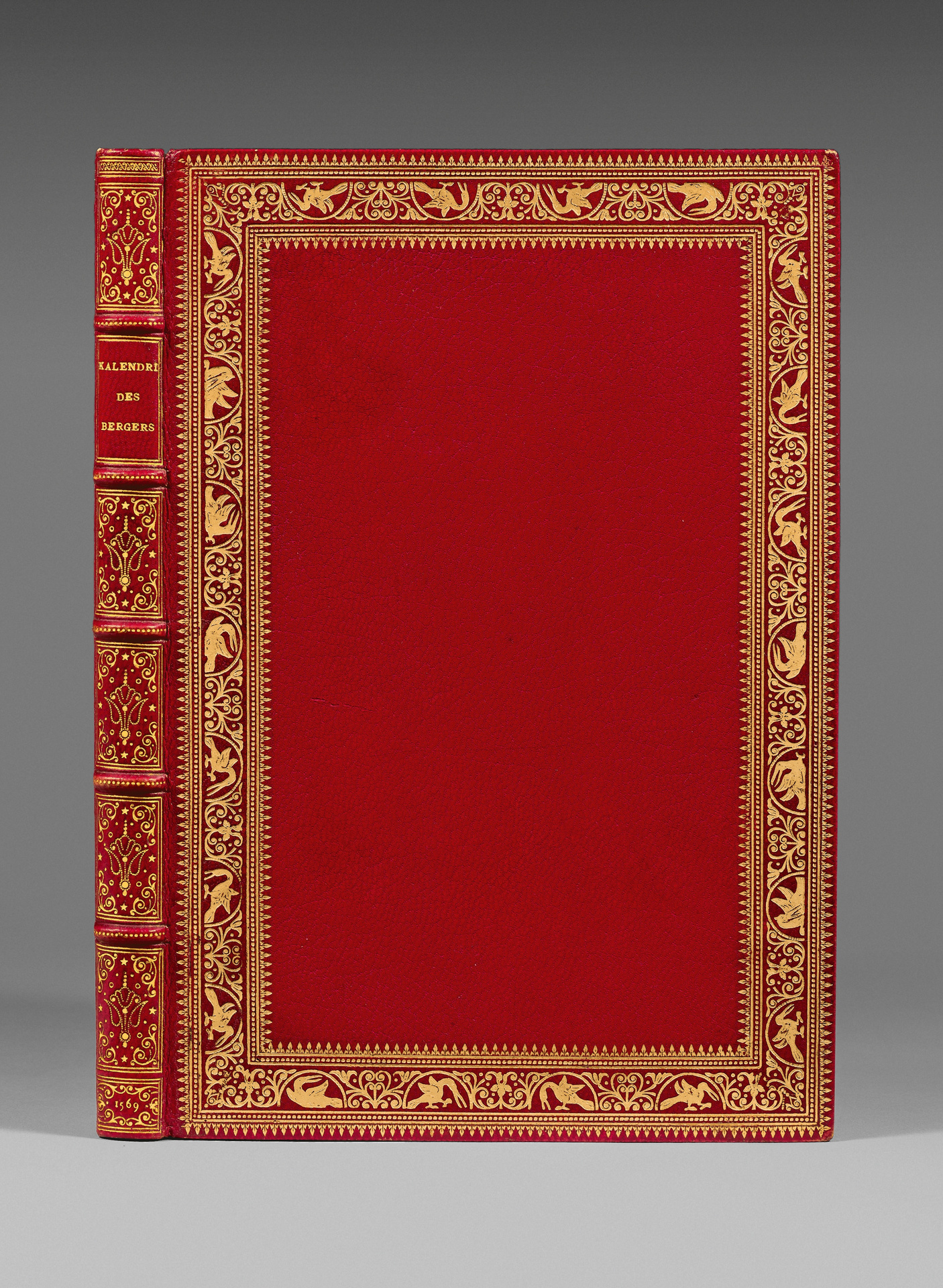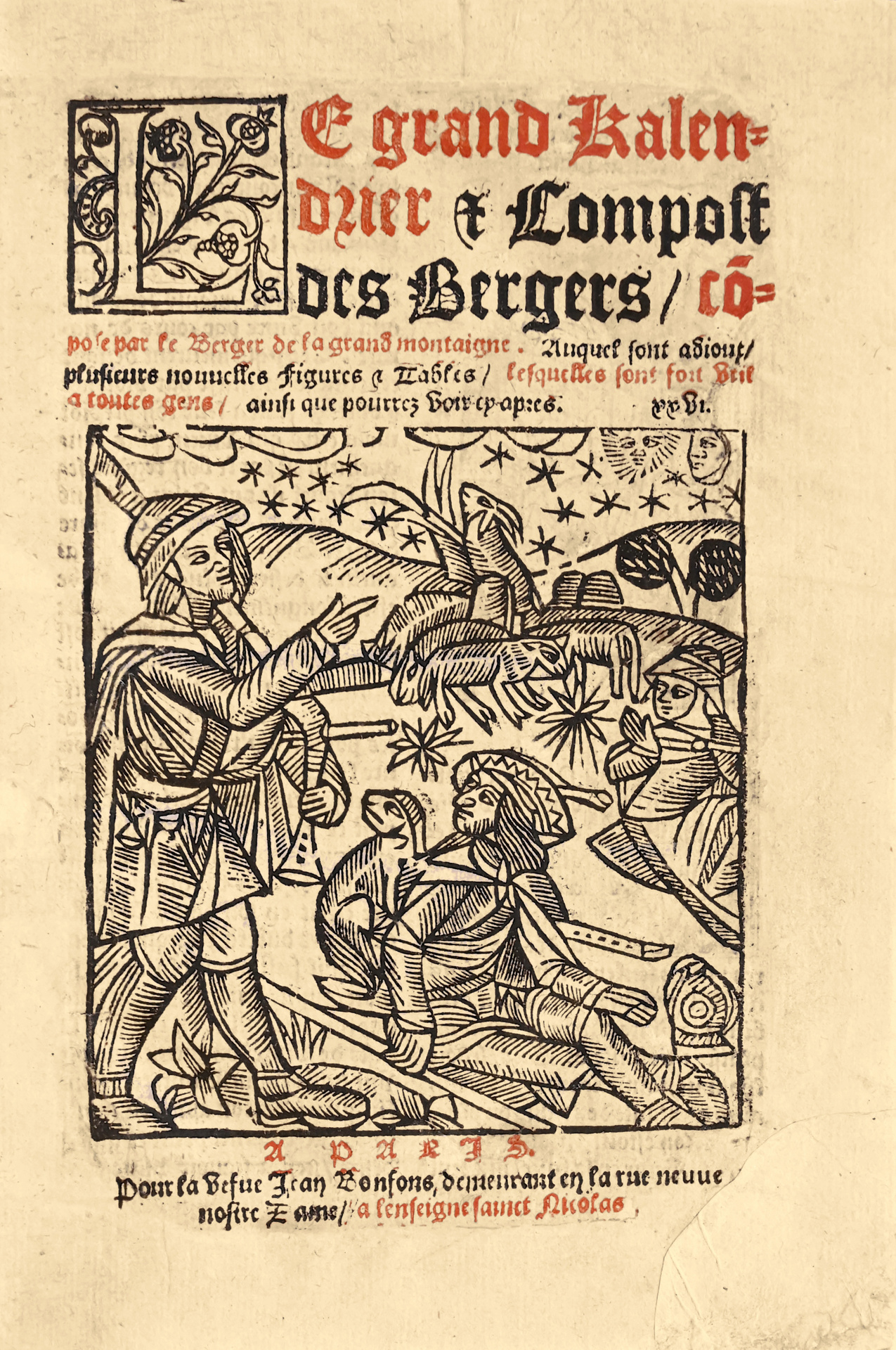Paris, pour la veuve Jean Bonfons, n.d. (around 1569).
Small gothic 4to of (104) ll., lower corner of title and of l. 13 restored, lower white part of last 7 ll. restored without affecting the text, paper strip cut in the lower part of the last l. without affecting the text. Red morocco, large gilt border with pelicans around the covers, ribbed spine with gilt fleurons, inner gilt border, gilt edges. Binding signed by Chambolle-Duru.
200 x 136 mm.
A beautiful extremely rare Parisian gothic edition of this lavishly illustrated work, which was extraordinarily successful in the 16th century.
Brunet, II, 206; Bechtel, C-37. Not in Fairfax Murray or Harvard (French Books).
The present edition is not dated, but it is known that Catherine Sergent, the widow of Jean Bonfons, worked as a bookseller-printer in Paris from 1568 (date of her husband’s death) to 1572 (date of his death). The Calendar at the beginning of the volume is given for 1569. We can therefore place with precision the publication of the Calendar around 1569.
The use of calendars spread from the 12th century onwards in books for clerical use, such as psalters, missals or martyrologies. At the end of the Middle Ages, the Books of Hours always begin with a calendar indicating the religious feasts.
The calendars and compost of the shepherds are of a different nature. Published to “teach the science of the shepherds, which is the science of the soul, of the body, of the stars, of life and death“, these books are in fact compilations for practical and moral use, intended for a secular public. They are inspired by medieval works such as “The Book of the Properties of Things” by Bartholomew the Englishman, the “Great Macabre Dances“, the treatises preparing souls for the Last Judgment. They had recourse to astrology, very present in the 15th and 16th centuries. The signs of the zodiac, the anatomical plates, the macabre dances or representations of the underworld, the representations of agricultural or craft activities for each month of the year, must enrich the text to guide Man towards his salvation. The first Compost des bergers was printed in Paris by Guy Marchant in 1491, before being republished many times in the following decades.
All sixteenth century editions of this popular calendar are extremely rare. This one, Gothic with two columns and with the title and calendar printed in red and black, following the tradition of manuscripts, is particularly rare.
Based on an equation established between the life of a man and the cycle of the year, the text offers both a perpetual almanac and a rich collection of moral precepts, practical advice and religious pieces.
The work first includes a prologue “of the auctor” justifying the fact that it transcribes the knowledge of the shepherds. The second prologue is that of the so-called master shepherd, who presents a lesson in counting. Our Compost is followed by a calendar, in the medieval tradition, such as is found in the preamble of many Books of Hours.
In addition to the calendars, mobile tables and phases of the moon, the trees and branches of the virtues and vices, the punishments of hell, the book of the salvation of the soul, chapters of anatomy, phlebotomy, dietetics, etc., one finds there several poems or ballads such as the Dictz des oyseaux, the Dictic des trespasses en forme de Balade & du Jugement, les Dix commandemens de la Loy, Lhystoire du Navire sur Mer, le Dict du Mort, les Dix commandemens du diable, les Dix Nations Chrestiennes, etc.
The illustration, of great interest, is composed of a very beautiful woodcut showing three shepherds in the field guarding their flocks and conversing while observing the stars, placed on the title, of more than 80 woodcuts in the text, including 8 large ones showing the penalties of hell, of fifty decorated letters and 522 small ramps for the tree of vices & mirror to know your sins.
The calendar has 12 woodcuts corresponding to the occupation of the months.
The cycle of 8 large woodcuts (105 x 97 mm) is of particular iconographical interest. The first one shows Lazarus telling Christ and the apostles, at Simon’s table, the vision of his death. The 7 other engravings illustrate with violence, realism and fantasy the torments of hell.
Very diverse, the whole of the engravings represent as much the occupations of the months with rural scenes, scene of hunting or gallant scene, as astronomical figures, figures of medicine or anatomy, the trees of the vices and the virtues… The typographical mark of the widow Bonfons is on the back of the last leaf (cf. Silvestre, n°125).
Very interesting iconographic cycle, of popular factory, illustrating the cultural gap existing in 1569 between the cultivated elite penetrated by the Renaissance and the bourgeois of the cities still sensitive to the medieval imagination.
A beautiful copy of a mythical illustrated book.
This edition is cited by Brunet (II, 206) without collation and without location of copies. The USTC online catalog mentions only 2 copies in public collections, one in London (British Library), the other at Yale University in the United States.
A fine wide-margined copy in an elegant red morocco binding by Chambolle-Duru called “aux pélicans”, made for baron Pichon (1897, n°293).
It bears an autograph note by the bibliophile on a flyleaf: “This volume is from 1569. One has the proof on the back of the l. C where the almanac of Easter and the mobile feasts begins in this year B.J.P “.
